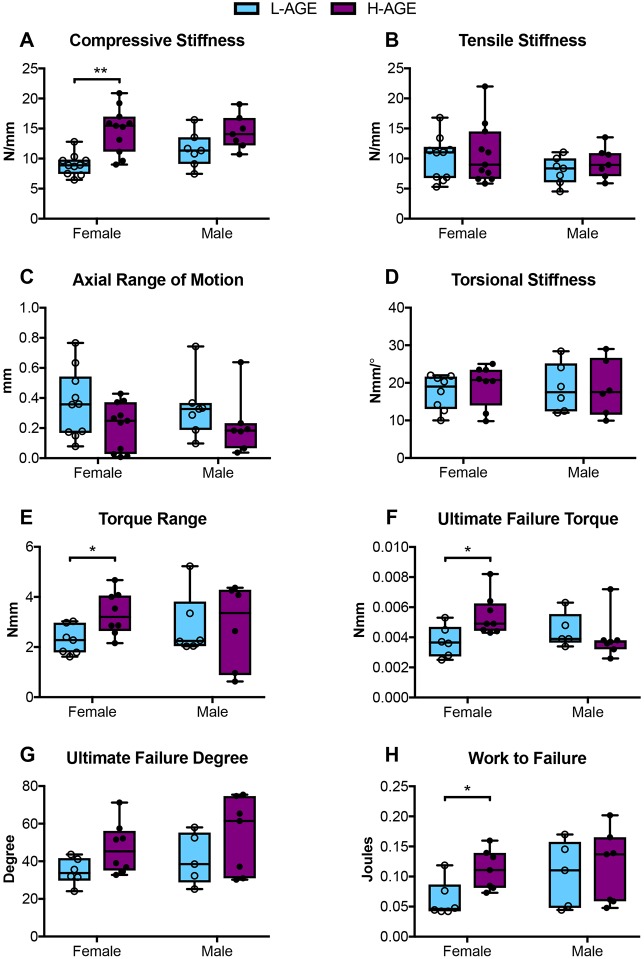Fig. 5.
Tension-compression and torsion biomechanical testing. (A) Compressive stiffness increased in H-AGE female (‘F’) (n=11) compared to L-AGE F (n=10), with no differences in (B) tensile stiffness, (C) axial range of motion or (D) torsional stiffness. (E) Torque range was increased in H-AGE F (n=8) compared to L-AGE F (n=7). Failure analysis revealed that (F) ultimate failure torque and (H) work to failure increased in H-AGE F (n=7) compared to L-AGE F (n=6), with no difference in the (G) ultimate failure degree. No differences were detected between L-AGE males (‘M’) (n=5) and H-AGE M (n=7). Data are presented as box plots from minimum to maximum±s.d. P-values are based on two-tailed unpaired Student's t-test with Bonferroni correction and significant if P≤0.05. *P≤0.05, **P≤0.001.

